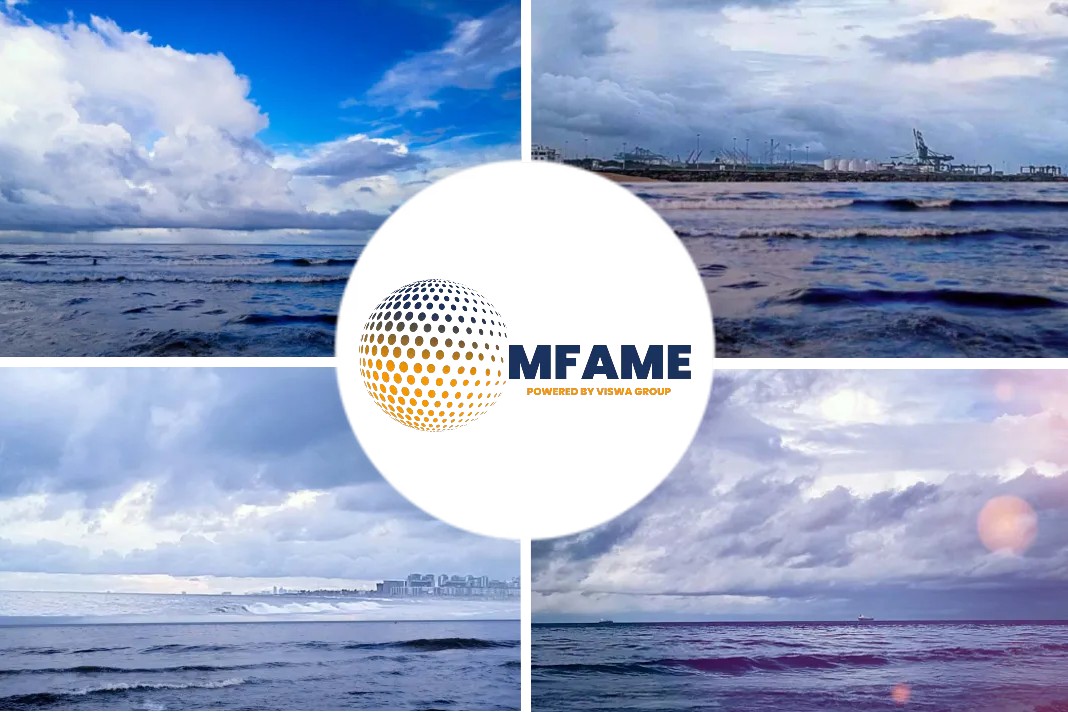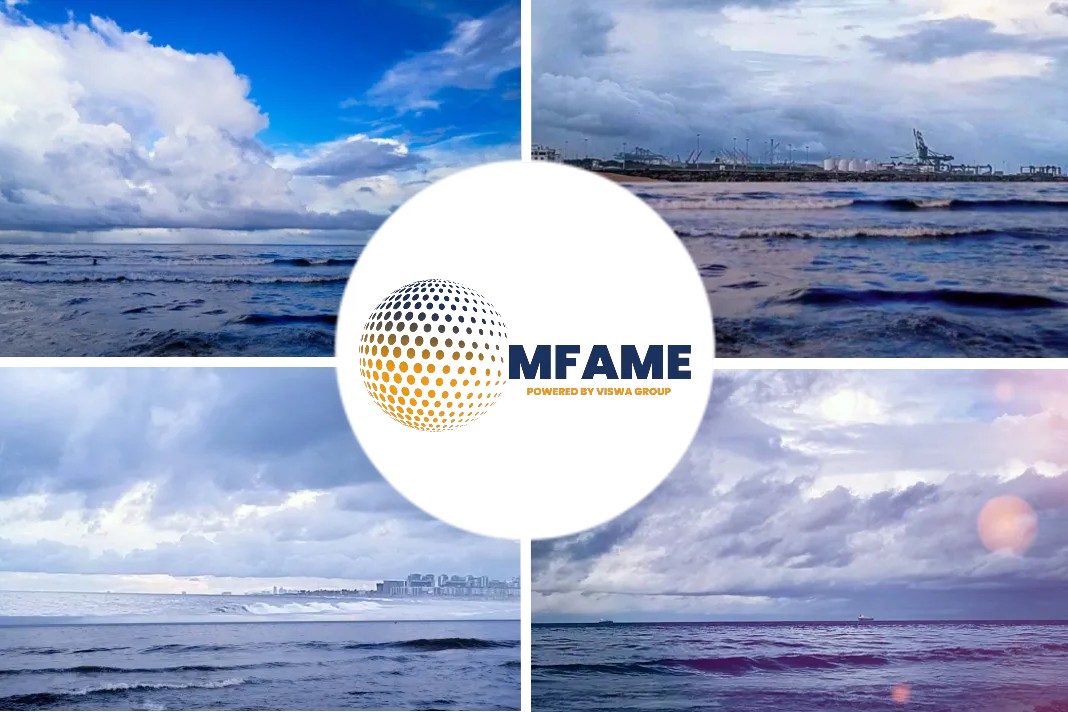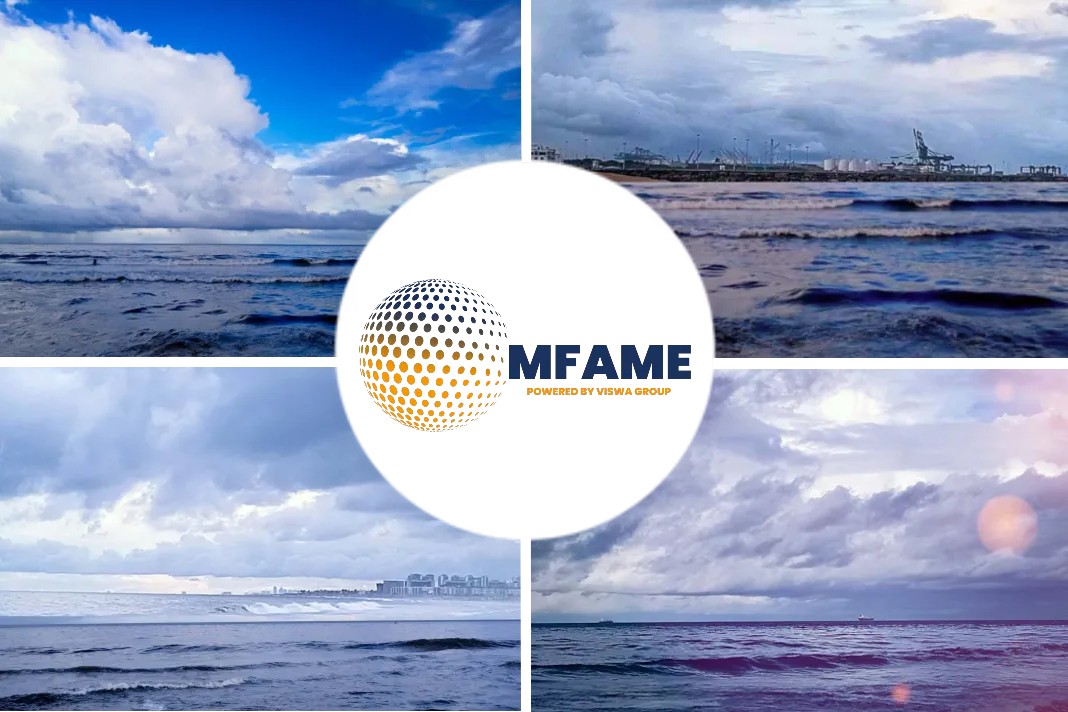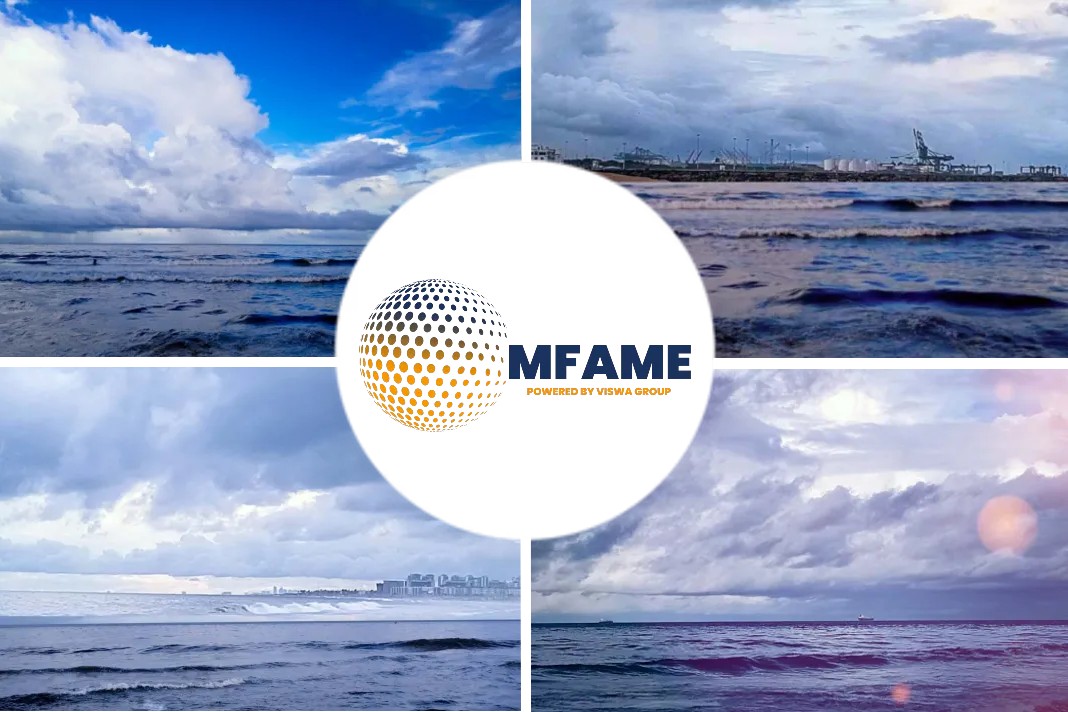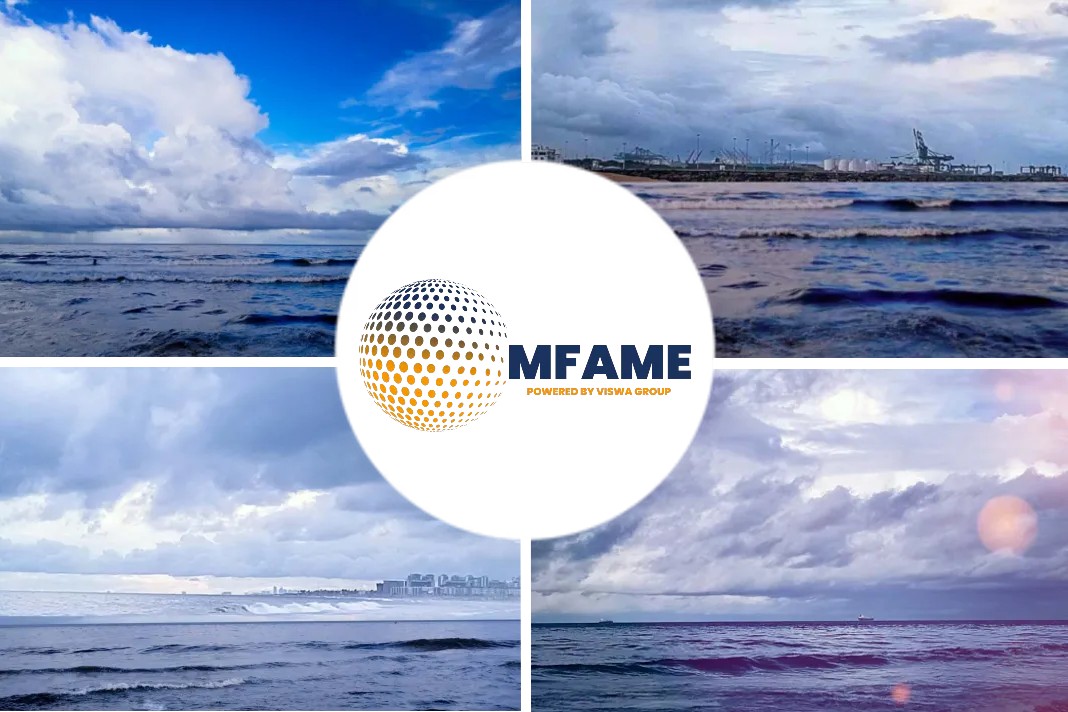Push to make dedicated Great Lakes vessels treat ballast water to prevent spread of invasive species, reports the Urban Milwaukee.
Invasive Species Discovered?
Jake Walsh, a postdoctoral researcher at the University of Wisconsin-Madison Center for Limnology, was examining the zooplankton in the sample, including the invasive spiny waterflea. The species was unintentionally introduced into the Great Lakes through the discharge of contaminated ballast water from an ocean-going vessel. It was first discovered in Lake Ontario in 1982 and spread to Lake Superior by 1987. The waterflea was spread through Midwestern lakes by recreational boaters. Photo by Coburn Dukehart/Wisconsin Watch.
How did these invasive species reach there?
More than $375 billion in cargo — iron ore, coal, cement, stone, grain and more — has flowed between Great Lakes ports and foreign nations since 1959. That is when Queen Elizabeth and U.S. President Dwight Eisenhower christened the St. Lawrence Seaway, heralding it as an engineering marvel.
But that series of locks, dams and channels connecting the Great Lakes to the Atlantic Ocean also carved a pathway for foreign plants and animals to wreak billions of dollars in ecological damage to the lakes. At least 80 invasive species have arrived in the ballast water that transatlantic ships take in and discharge for balance.
The round goby, which came from the Black and Caspian seas in the 1990s, gobbles up food some native fish depend upon. So do European zebra and quagga mussels, which also damage docks and boats and clog pipes and machinery, costing the Great Lakes region an estimated $500 million each year.
Freighters Responsible?
The Paul Tregurtha, a 1,013-foot freighter known as a “laker,” is believed to be the longest active vessel in the Great Lakes. Built in Toledo, Ohio, it was launched in 1981 and hauls coal and iron ore. Here, it is seen along the Detroit River in Detroit on Aug. 4, 2019. A battle is brewing between the shipping industry and environmentalists over efforts to extend ballast water regulations to “lakers” – freighters that do not leave the Great Lakes.
BWMS Regulations Reduced Invasive Species
More than 20 years of federal and state efforts to regulate ballast water have slowed the introduction of new species to the Great Lakes, which are located in both the United States and Canada. But those regulations exempt “lakers” — hulking freighters traveling exclusively within the Great Lakes — and researchers say that helps invasive species spread after they arrive.
How shippers influence?
Lakers can transport up to 70,000 tons of cargo and hold up to 16 million gallons of ballast water, enough to fill more than 24 Olympic-sized swimming pools. These ships use tanks of ballast water to maintain balance, dumping or replacing it as they deliver or take on cargo.
“You would expect these ships to move invasive species, and that’s what our research shows,” said Allegra Cangelosi, a Great Lakes ballast water expert and senior researcher at Penn State University-Behrend.
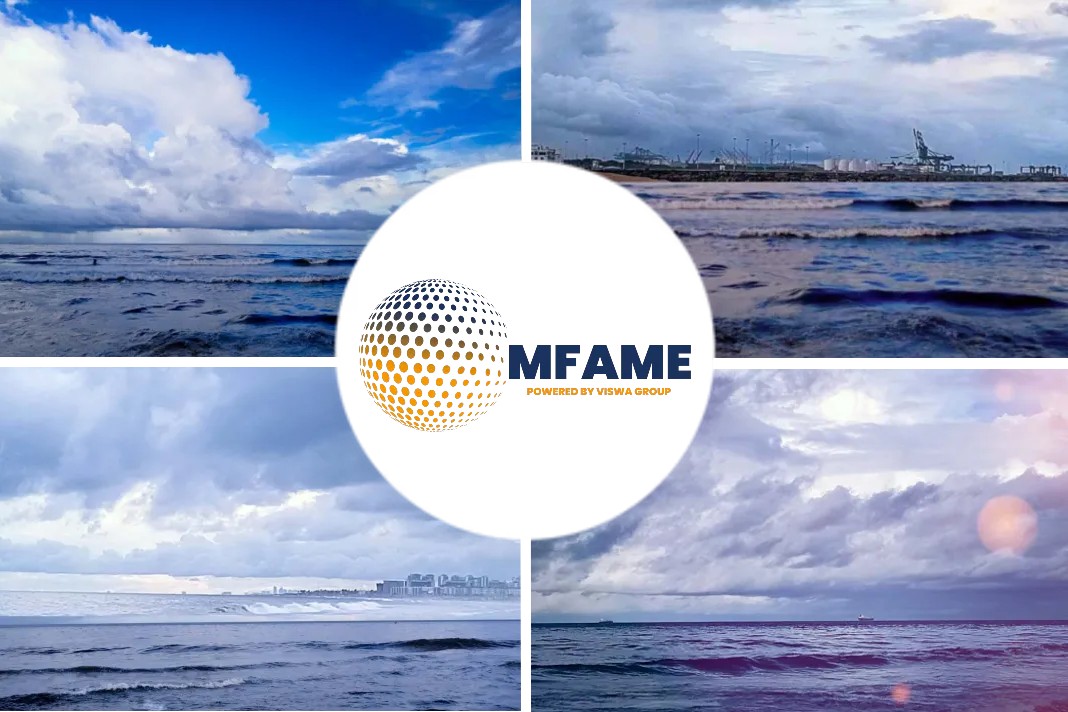
Ballast Water To Be Treated
Canadian regulators want lakers to treat ballast water by 2024, and environmentalists are pushing for similar rules for the roughly 50 freighters that fly a U.S. flag. There are about 80 lakers under Canadian flags. The U.S. Environmental Protection Agency is expected to develop new ballast water standards by December 2020, and the Coast Guard is supposed to draft implementation rules the following two years.
Industry Backs Lakers
But industry groups argue researchers have not proved lakers move invasive species, and new regulations would cost hundreds of millions of dollars and grind business to a halt. Lakers handle about half of the $15 billion in cargo that moves around the Great Lakes each year.
For now, no treatment system cost-effectively kills unwanted organisms in laker ballast water, but scientists are racing to find a solution — and test it — before regulators finalize the new rules.
Invasives blanket Great Lakes
Scientists have spent years examining how Great Lakes invaders spread across the region. That work continued on a cold morning in November in Madison, Wisconsin.
Nearly a dozen University of Wisconsin-Madison students and researchers performed a tradition in Lake Mendota, along the northern edge of campus: removing a dock before the lake freezes.
Dave Harring, facilities and equipment manager for the University of Wisconsin-Madison Center for Limnology, leads students and researchers in removing the center’s dock before the onset of winter on Nov. 30, 2018. Researchers scrape the dock’s wooden pilings for zebra mussels, counting them to track the density of the invasive species in the lake. The mussels came to the Great Lakes in ballast water from ocean-going freighters and have since spread to hundreds of inland lakes.
How Invasive Species Spreading?
Aside from protecting the dock from ice damage, the effort offered insight into how many invasive zebra mussels occupy the lake. Mike Spear, a doctoral student who watched the action, showed off one wooden piling plucked from the water. Five years ago, it would have looked unremarkably bare. Now, the quarter-inch-sized mussels completely covered it. Spear marveled at the mussels’ persistence in latching onto wood long-ago treated with arsenic.
“You’d think it (arsenic) would prevent colonization,” he said. “These creatures (are) always full of surprises.”
Spear scraped the creatures into a plastic bag. He would later freeze and count the mussels to estimate the density of the species in Lake Mendota. The current guess: “billions,” since a class studying the Madison-area lake first spotted them in 2015.
The mussels had plenty of help reaching the inland lake about 80 miles west of Lake Michigan.
Invasive zebra mussels are seen on wooden pilings from a dock at the University of Wisconsin-Madison Center for Limnology on Lake Mendota in Madison, Wis., on Nov. 30, 2018. Students and researchers removed the dock before the onset of winter. Here, doctoral student Mike Spear scrapes the dock’s wooden pilings for zebra mussels to count the number that are attached and compare the number to previous years. His research helps track the density of mussels in the lake.
Students and researchers removed the dock before the onset of winter. Here, doctoral student Mike Spear scrapes the dock’s wooden pilings for zebra mussels to count the number that are attached and compare the number to previous years. His research helps track the density of mussels in the lake.
A biologist first spotted the mussels in 1988 in North America while collecting worms in Lake St. Clair, sometimes called “the Sixth Great Lake,” between lakes Erie and Huron. Cargo ships traveling from the Black Sea likely dumped ballast water laden with mussel larvae, according to the federally funded Great Lakes Aquatic Nonindigenous Species Information System (GLANSIS). Within two years, mussels had spread to all five Great Lakes, likely in ballast water of commercial ships — possibly including lakers — and by attaching to hulls of boats and barges.
Clinging to everything, the mussels can survive days outside the water and gradually reached hundreds of inland lakes by latching onto boats, bait buckets and trailers.
How do these invasive affect the environment?
Aside from clogging the pipes of power plants and water systems, invasive mussels outcompete native fish and damage their habitats. In some parts of the Great Lakes, researchers suspect a link between mussel invasions and a decline in whitefish, a lucrative catch for the commercial fishing industry.
Zebra mussels are among 187 nonnative species established in the Great Lakes. They are sometimes called the “poster child” for biological invasions, which the United Nations’ International Maritime Organization calls “one of the greatest threats to the ecological and the economic well being of the planet.”
Their takeover of North American waterways galvanized scientists and policymakers who have sought to thwart their advances in many ways — ranging from the Wisconsin requirement that boaters and anglers inspect and remove invasives from their vessels to treating ballast water of ocean-going ships called “salties,” which have been linked to introductions of 80 unwanted species to the Great Lakes.
A sign warning about the dangers of sharp zebra mussels on the lake bottom is seen near a dock on Lake Mendota at the University of Wisconsin-Madison on Aug. 16, 2019. The invasive mussels attach firmly to rocks, piers and lake bottoms, making them a hazard to swimmers.
Lake Remains Unregulated
But laker ballast water remains unregulated, making it tougher to limit damage from other invaders, researchers say.
“I wouldn’t say every ship movement poses a high risk, but we are sitting ducks for that instance in which a risk arises,” Cangelosi said. “All nature has to do is drop in a bad actor, and we’re sunk.”
‘Swish and spit’
Over the past decade, scientists have confirmed just three new species to reach the Great Lakes: all were tiny crustaceans. None of them arrived in ballast water. The last species to do so was the bloody red shrimp in 2006. Its impact on the Great Lakes is not yet clear.
Experts credit the progress to a flushing technique called ballast water exchange or “swish and spit.” Since 2006, U.S. and Canadian governments have required salties to dump water they took in at foreign ports in the middle of the ocean, replacing it with salt water likely to kill freshwater creatures hiding in their tanks — before the ships reach the Great Lakes.
The Kaministiqua, a 730-foot ocean-faring ship known as a “salty,” travels near William G. Milliken State Park and Harbor in Detroit on August 2, 2019. Ocean-going vessels that enter the Great Lakes from the St. Lawrence Seaway are subject to strict ballast water regulations to stem the introduction of invasive species. Those rules do not apply to freighters that stay in the lakes. Photo by Anthony Lanzilote / Bridge Magazine.
The Kaministiqua, a 730-foot ocean-faring ship known as a “salty,” travels near William G. Milliken State Park and Harbor in Detroit on August 2, 2019. Ocean-going vessels that enter the Great Lakes from the St. Lawrence Seaway are subject to strict ballast water regulations to stem the introduction of invasive species. Those rules do not apply to freighters that stay in the lakes. Photo by Anthony Lanzilote / Bridge Magazine.
For some ships, that can mean also treating ballast water with chemicals, filtration, ultraviolet treatment or other methods.
Ballast Water Exchange To Help
“The success story of ballast water exchange has not been told — or has not been told well enough,” said Rochelle Sturtevant, who manages GLANSIS for the Michigan Sea Grant Extension, working with the federal Great Lakes Environmental Research Laboratory.
“For the last 20 years we’ve been so focused — and rightly so — on the things coming from outside the Great Lakes,” Sturtevant said. “As the data is starting to show, we’ve got that mostly under control, maybe it’s time to start revisiting some of these things like spread.”
‘Significant risk’ for spread
Some 20 percent of the Great Lakes’ nonnative species have reached all five lakes, and the remainder “still pose a significant risk for additional spread,” according to a chapter Sturtevant wrote for the State of the Great Lakes 2019 report authored by more than 180 Great Lakes scientists as part of a joint U.S.- Canadian agreement to protect the waters. The report is still in draft form.
Fish-killing viruses might be among the troublesome invasive organisms lakers could transport, Sturtevant said.
Boat washing programs and angler education may slow the spread in lakes Ontario and Erie, but the unregulated ballast water of lakers “may pose a relatively high risk” of aiding invaders, the report said.
That includes largemouth bass virus, which since 2000 — and as recently as 2018 — has been found in lakes Erie and St. Clair and a few inland lakes in Michigan, Wisconsin and other Great Lakes states. It typically kills large adult fish which are already stressed and can eliminate 10 to 20 percent of a population, according to the Michigan Department of Natural Resources.
Finding ways to treat laker ballast water, however, is not easy.
How To Regulate Lakers?
Inside a University of Wisconsin-Superior laboratory, researchers tested a potential weapon against unwanted species lurking in laker ballast water.
The Nano Air Bubble Aeration System, a metallic box roughly the size of a TV cabinet, hissed as water cycled through from a tank. The contraption zapped any tiny organisms inside with bubbles that delivered ozone. Such technology already treats toxic algal blooms in ponds, said Kelsey Prihoda, a researcher with UW-Superior’s Lake Superior Research Institute.
Christine Polkinghorne, assistant scientist for the University of Wisconsin-Superior’s Lake Superior Research Institute, tests a prototype of a ballast water treatment system for “laker” ships operating on the Great Lakes on May 8, 2019. The Nano Air Bubble Aeration System neutralizes tiny organisms in ballast water using bubbles that deliver ozone. Photo by Danielle Kaeding / Wisconsin Public Radio.
Christine Polkinghorne, assistant scientist for the University of Wisconsin-Superior’s Lake Superior Research Institute, tests a prototype of a ballast water treatment system for “laker” ships operating on the Great Lakes on May 8, 2019. The Nano Air Bubble Aeration System neutralizes tiny organisms in ballast water using bubbles that deliver ozone. Photo by Danielle Kaeding / Wisconsin Public Radio.
Her team was examining whether the prototype, developed by the Florida-based American Marine University Research Institute, could kill invasive species in laker ballast water.
“One day they hope to have it on board ships,” Prihoda said.
That is unlikely to happen without new regulations.
EPA on Lakers
When the EPA overhauled ballast water regulations in 2013, the agency exempted lakers built before 2009, citing a lack of available technology. Two years later, the Second Circuit U.S. Court of Appeals called that decision “arbitrary and capricious” and instructed regulators to reconsider the issue. Experts still acknowledge ballast water exchange does not work well for freshwater vessels, and a variety of factors make treatment more difficult.
Unlike in salties, lakers’ steel ballast tanks lack special coating to prevent corrosion from chlorine or other treatment chemicals, said Tom Rayburn, director of environmental and regulatory affairs for the Lake Carriers’ Association, which represents American laker companies. Lakers also take in far more ballast water than salties and make relatively short voyages.
The Whitefish Bay, a 740-foot-long freighter known as a “laker,” owned by Montreal-based Canada Steamship Lines, passes along the Detroit River in Detroit on Aug. 4, 2019. In 2024, Canada will require “lakers” — ships that don’t leave the Great Lakes — to treat ballast water to slow the spread of invasive species. Groups representing U.S. freighters are fighting efforts for similar regulations, claiming it would cost hundreds of millions of dollars.
Treating Ballast Water Not Cost Effective
Treating all that water could take up to 72 hours — double or triple the length of a trip, Rayburn said.
In addition, outfitting every American laker with ballast water treatment systems would cost $639 million, atop $11 million each year in operation and maintenance costs, according to a 2017 report commissioned by the Lake Carriers’ Association. The costs did not include the lakers’ time out of service during the upgrades.
Transport Canada, the country’s transportation agency, has proposed requiring its 80-laker fleet to install ballast water treatment systems by 2024. It says the ships “pose a high risk of spreading NIS (nonnative invasive species).”
But Rayburn contended Canadian companies will have less trouble complying than Americans might. Canadians can buy cheaper ships built abroad, while under federal law, Americans must buy U.S.-made ships.
Industry questions research
Rayburn’s group also questions the evidence that lakers are responsible for invasions of nonnative species.
For years, Great Lakes researchers and regulators have suspected that lakers moved around species. As far back as 2008, the Michigan Department of Environmental Quality publicly stated: “We agree ballast water discharges from ‘lakers’ play a significant role in contributing to the spread of aquatic nuisance species that are already present in the Great Lakes.”
Researchers are still quantifying that risk.
How research is affected?
But in 2017, UW-Superior researchers tested the ballast water tanks of eight U.S. and Canadian lakers traveling from the four lower Great Lakes to western Lake Superior. Their 2018 report documented several species of tiny zooplankton no one had previously recorded in Lake Superior — one of which had never been found in any Great Lake. The report followed Canadian research that found nonnative species in 90 percent of laker ballast water samples.
The Wisconsin researchers offered several recommendations, including developing workable treatment systems.
The Lake Carriers’ Association cooperated with the researchers by allowing them to board the ships and collect samples as part of a project required by the Minnesota Pollution Control Agency. But the group interpreted the results differently.
It criticized the study’s sampling as limited, and said it did not prove that laker-transported species could survive in new lakes.
Studying More To Validate Existing Research
“Let’s do some more work and get some more data to determine whether this study is telling us something new, or if these are limited data points that don’t reflect bigger issues and trends in the Great Lakes,” Jim Weakley, the group’s president, said following the report’s release.
Prihoda, the UW-Superior researcher, agreed having data covering a whole shipping season would give researchers a clearer glimpse at lakers’ role in invasions. She also acknowledged research is scarce about whether species were becoming established in new lakes after riding in laker ballast tanks. But waiting to take action is risky, Prihoda said.
Kelsey Prihoda, a researcher at the University of Wisconsin-Superior’s Lake Superior Research Institute, sits in her office on May 8, 2019. The institute’s research has shown that “laker” ships operating solely within the Great Lakes can transport nonnative species between lakes. Prihoda’s team is examining whether a prototype called the Nano Air Bubble Aeration System could kill invasive species in laker ballast water. Photo by Danielle Kaeding / Wisconsin Public Radio.
“The thing is, once an organism becomes established, it could become invasive and spread. (It is) too late at that point to do anything about it,” Prihoda said.
The Lake Carriers’ Association declined to allow Wisconsin Watch/Wisconsin Public Radio and Bridge Magazine to board a ship to report this story. Rayburn said the policy recommendations stemming from the UW-Superior study made captains more hesitant to welcome outside observers.
“We just want this to be more educational than judgmental,” he said.
New rules looming
- Environmentalists hope research advances will give the EPA grounds to plug the regulation exemptions for lakers.
- The agency is drawing up new standards by 2020 for dumping ballast water and the Coast Guard will craft rules for enforcing them by 2022.
- But a Coast Guard spokesman Richard Everett said whether those standards would apply to lakers is still to be decided.
- The legislation signed by President Donald Trump in December was a compromise between environmentalists and the shipping industry after an earlier attempt in Congress to loosen ballast water protections for salties.
- It preserved the EPA’s Clean Water Act Authority to set ballast water standards, but it also made it difficult for states to set their own, stricter rules.
- The wide-ranging law includes $50 million for invasive species prevention efforts. Molly Flanagan, vice president for policy at the Alliance for the Great Lakes, a Chicago-based environmental group, said the money could be used for laker ballast water research.
“We’re rapidly going to be running up against a situation where lakers are out of excuses and are going to have to treat their ballast water,” she said.
Cangelosi of Penn State said U.S. regulators should look for creative solutions. For example, regulators could require lakers to target specific known organisms in ballast water.
“I feel for the lakers because they are not bringing these things in (from overseas),” Cangelosi said. “A lot of the things that we worry about come in with the salties, and then the lakers are caught holding the bag — moving it all around the lake.”
Did you subscribe to our daily newsletter?
It’s Free! Click here to Subscribe!
Source: Urban Milwaukee






